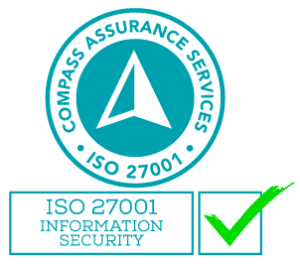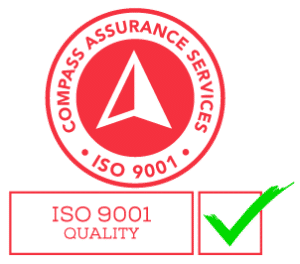Effective remote collaboration is crucial for architecture design managers to maintain productivity and uphold high-quality design standards.
Remote and hybrid working environments have become the norm, and design managers must adopt strategies that facilitate seamless communication, efficient project management, and robust teamwork.
1. Utilise Advanced Collaboration Tools
Advanced collaboration tools are essential for seamless communication and project management when working remotely. These tools help bridge the gap created by physical distance, ensuring that all team members can contribute and collaborate effectively, helping them to stay on track with project goals.
Video Conferencing Software
Platforms like Zoom or Microsoft Teams facilitate face-to-face meetings and discussions, replicating the in-person experience as closely as possible. Regular video call meetings help maintain a sense of connection and enable real-time communication, which is crucial for discussing complex design ideas and resolving issues promptly.
Project Management Software
Tools such as Asana or Trello help track project progress, manage tasks, and set deadlines. These platforms provide a centralised place where all team members can see the project’s status, assign tasks, and monitor timelines. This transparency ensures that everyone is aware of their responsibilities and the overall progress of the project.
Design Software
Collaborative design platforms like Autodesk Revit or SketchUp allow multiple users to work on the same project in real-time. These tools enable team members to make changes, provide feedback, and view updates instantly, ensuring that the design process is fluid and collaborative. This capability is particularly beneficial for architecture design teams that rely heavily on visual and spatial information.
2. Establish Clear Communication Protocols
Clear communication protocols are vital to prevent misunderstandings and ensure that everyone on the team is aligned with common goals and expectations. Open communication fosters a collaborative team environment where employees can share ideas, provide updates, and address challenges promptly.
Regular Meetings
Schedule consistent check-ins and team meetings to discuss project progress, upcoming tasks, and any issues that need resolution. Weekly or bi-weekly meetings help keep everyone informed and increase employee engagement. Ensure that these meetings are well-structured with an agenda to maximise productivity.
Defined Channels
Use specific channels for different types of communication. For instance, Slack can be used for quick updates and casual conversations, while email can be reserved for formal communication and detailed discussions. Establishing designated channels helps team members know where to find information and how to communicate effectively.
Documentation
Maintain detailed project documentation that is accessible to all team members. This includes project plans, design specifications, meeting minutes, and any other relevant information. Using shared platforms like Google Drive or Dropbox ensures that everyone has access to the latest documents, reducing the risk of miscommunication and ensuring that all team members are working with the same information.
3. Implement Flexible Working Hours
Flexible working hours accommodate different time zones and personal schedules, which can significantly enhance team productivity and morale. Allowing team members to work when they are most productive can lead to better outcomes and a more satisfied workforce.
Core Hours
Define core hours when all team members are available for meetings and collaboration. This ensures that there is a set time each day or week when everyone can synchronise their efforts, discuss progress, and resolve any issues that require immediate attention.
Flexible Scheduling
Allow team members to choose their working hours around these core times. This flexibility helps accommodate personal preferences and external commitments, leading to a more balanced and motivated team. For example, some team members may prefer working early in the morning, while others may be more productive in the evening.
Time Zone Considerations
When managing a distributed team across different time zones, it is important to be mindful of these differences when scheduling meetings and setting deadlines. Use tools to find suitable meeting times that work for everyone, and avoid scheduling important meetings outside of core hours to ensure maximum participation.
4. Foster a Collaborative Work Culture
Building a collaborative work culture in a remote environment requires intentional efforts to ensure that team members feel connected, valued, and motivated to contribute their best work. A strong collaborative environment promotes innovation, enhances team cohesion, and leads to better project outcomes.
Team Building Activities
Regular virtual team-building activities can strengthen relationships and build trust among team members. Activities such as online games, virtual coffee breaks, and themed meetings can create a sense of camaraderie and make remote work more enjoyable. These activities help team members get to know each other on a personal level, which can improve team collaboration and communication.
Open Feedback Channels
Encourage team members to provide feedback and suggestions for improvement. Create an environment where constructive criticism is welcomed and acted upon. Use tools like anonymous surveys or dedicated feedback sessions to gather input from all team members. This openness not only helps identify areas for improvement but also makes team members feel heard and valued.
5. Monitor and Evaluate Progress
Regular monitoring and evaluation are essential to maintain project quality and ensure that deadlines are met. Continuous assessment helps identify potential issues early, allowing for timely interventions and adjustments.
Regular Updates
Use project management tools to keep track of progress and milestones. Tools like Asana, Trello, or Jira can provide real-time updates on task completion, project phases, and overall progress. Regularly updating these tools ensures that everyone is aware of the project’s current status and can plan their work accordingly.
Performance Reviews
Conduct regular performance reviews and provide constructive feedback. Schedule one-on-one meetings to discuss individual performance, set goals, and address any challenges team members might be facing. These reviews should be supportive and aimed at helping team members grow and improve.
Quality Control
Implement quality control measures to ensure that the work produced meets the required standards. Regularly review design outputs, conduct peer reviews, and use checklists to verify that all aspects of the project align with the initial specifications. This ensures that any discrepancies are caught and corrected early, maintaining high-quality outputs.
Implement the Collaboration Strategies Your Architectural Firm Needs
Implementing effective remote collaboration strategies and communication tools is essential for architecture design managers to maintain productivity and achieve high-quality results. By adopting these practices, architecture design managers can ensure that their teams work efficiently and cohesively, regardless of physical location, ultimately leading to successful project outcomes.
Steadfast Solutions has the professional support and services to enhance remote collaboration and project management for architectural firms, no matter where employees are working. Our expert team is ready to assist you in implementing the best strategies to optimise your architecture design projects.




